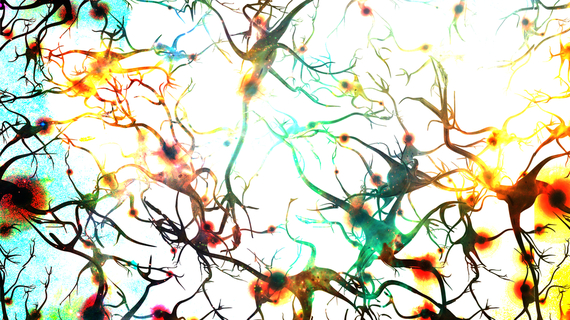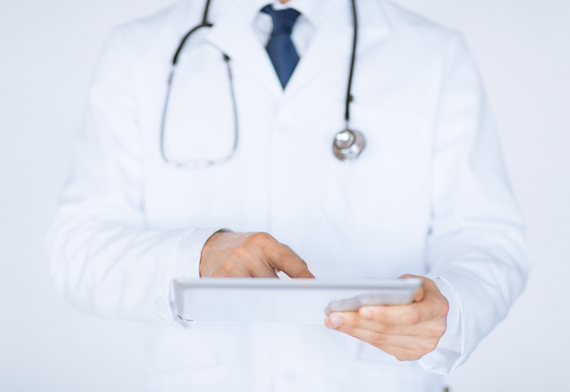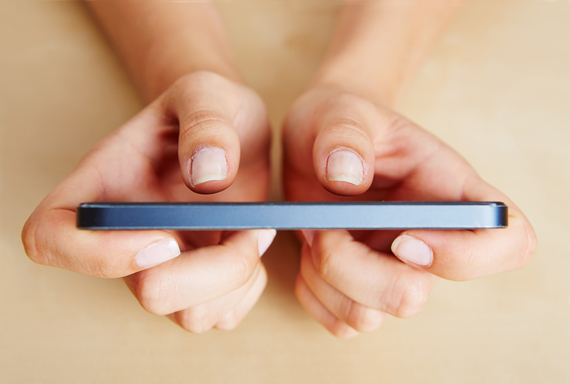The next groundbreaking innovation in technology isn't a fancy smartphone or an awesome new app. It's you.
No, you're not a robot. But your body is a trove of data, and accessing that data through internet-based technology is the crux of connected health care. In 2013, health and wellness products accounted for $3.3 billion of revenue in the US alone. By 2018, this is expected to rise to $8 billion as a consequence of connected devices.
While technology and health care aren't exactly strange bedfellows, the 'Internet of Things' is a promising and already tangible innovation. We're at the brink a transformative health care model, where connected devices change the structure of underlying health care systems. In a few years, we'll see these devices shift from a niche trend to widespread adoption. So, how will connected healthcare evolve and what impact will it have on our wellbeing?
Under Control: Health Management
From fitness monitors to heartrate apps, using technology to manage a person's state of being isn't a novel concept. For example, we're already seeing the impact of this on the glucometer. Cellular-enabled blood glucose meters of the future won't just measure blood sugar, but will analyse your diet and provide nutritional advice as well.
Sensionic's connected glucose monitoring device is a miniature implant that sends its measurements to your mobile phone. The company recently raised $20 million to develop and commercialize the first fully implantable, long-term continuous glucose monitoring (CGM) system.
This year, Israeli firm LabStyle Innovations brought its all-in-one Dario glucometer to the market. Through the smartphone connection, an app and web portal let the user easily keep track of a personal archive of data, as well as help keep track of food intake and share critical data in real-time with loved ones or caregivers.
The big tech companies are involved too. Google X lab recently unveiled its smart contact lens for diabetics, a device that monitors blood glucose levels detected through tear fluid using a tiny wireless chip and sensor.
Health monitoring tools won't just be useful to health fanatics or patients. IBM states that today, connected health users exist in two groups: those who are extremely health conscious and fitness focused (the "Motivated Healthy") and those who are chronically or terminally ill and require regular monitoring (the "Chronically Monitored"). Between those two extremes lie the largest group, the "Information Seekers", consumers who seek some measure of control over potentially serious health risks or conditions. This is the lucrative part of the market that health device innovators aim to target.
Assisted, but independent health care
By 2050, seniors over 60 years of age will outnumber children below the age of 15 for the first time. Considering the world's rapidly aging population, the ability to remotely access and personalise medical advice or care is fast becoming a necessity.
Remote health care, another important area in the Internet of Things movement, is shifting care away from the clinic and into the home. Powered by new sensor technology and big data analytics, connected devices are able to translate personal data into meaningful information applicable to patients and doctors alike.
In the United Kingdom, the National Health Service is trialling initiatives with remote devices in attempts to reduce their operating costs as well as offer improved individual care. In the English county of East Surrey, the NHS is funding 100 select patients with severe depression to test new technology in monitoring their mental health. Trial participants will use a special tablet that lets them track their own progress and offer expert advice through Skype-style video conferencing.
Through making health mobile, individualized healthcare can be administered more efficiently and more effectively. It creates possibility for more accurate diagnoses and more immediate intervention, opening up major market opportunity that many companies are already rushing to be a part of.
CarePredict, a company founded in 2013, connects elderly users with their loved ones through a wearable device and monitoring tool. By tracking the daily rhythm of its wearer, the system is meant to detect even the slightest alarming changes through recognizing the user's patterns in sleep, movement, and location.
The Texas-based Vivify Health is an example of an assistive system that provides remote health care from doctors and pharmacists, diminishing the need to book facetime with a doctor. From a hospital or physician's perspective, this enables preventable hospital admissions, more accurate disease management, and a more scalable approach to population health in general.
It's Getting Personal with Quantified Self and Data Integration
As connected health monitoring and remote care devices proliferate the space, so does the rise of personalised self-tracking technology. This burgeoning area of innovation lets us archive rich personal data to better understand our daily health habits. From Nike's Fuelband to Fitbit and apps like Moves, the first generation of wearable technology has fueled this emergence of the quantified self movement. Made possible by the availability and affordability of coupling a sensing device with a smartphone, these gadgets let a user track their daily activity as a means of driving personal behavioural change.
These wearable bracelets are only the beginning as companies begin to incorporate technology with the human body. Lumafit, for example, has created a sensor that fits into the ear, working as a personalised fitness and meditation trainer.
While fitness tracking has hit the mainstream, the quantified self movement is expanding into other areas of wellness. Bellabeat, described as a 'FitBit for pregnancy', is a connected system that allows pregnant women to track their wellbeing alongside their unborn child's health. We're also seeing more devices for everyday use emerge, such as Lumoback, a tool that brings quantified awareness to your posture.
With all this personal data, how do we begin to understand it and make changes that positively affect our health? One of the great challenges innovators in this space will face is discovering the best ways to dissect this trove of collected data and measure its impact.
Optimize me is one example of an app looking to bridge this gap between data collection and analysis. As Bogdan Gerya, creator of OptimizeMe explains, "Taking daily steps as an example, it may show the positive correlation between them and your mood, quality of sleep and the time you spend with your best friends".
Human is an app that engages users to move more by recording and distinguishing their daily activity, simply by reaching a timed goal of walking, running or cycling 30 minutes a day. Not only does this show how data can be funneled toward the user's experience, but the company's Cities project is a prime example of how a health app can cross its data into a broader perspective. The project logs over 7.5 million miles of activity across the world, tracking where and by what means people navigate around cities.
As Apple and Google step up to the plate of the quantified self movement with the much-anticipated introduction of HealthKit and Google Fit respectively, these platforms will undoubtedly mark a big move for health data aggregation.
Connecting All the Pieces
As it becomes easier to track our health and daily habits, health care will become more autonomous, personable and remote. The big question is how this rich data will be integrated and used to better treat patients. The main challenge lies in figuring out how to cross-integrate this data in a meaningful way, so that individuals can see a full picture of their personal well-being.
Our health isn't something we can shake off when we please; it's a fundamental part of who we all are, every minute of every day. Connected health care offers the opportunity to help us understand our bodies and minds in a way that's non-intrusive and can be truly transformative. As connected devices become more accessible, our tastes and preferences will influence the market's product development. Despite the advancement in technologies, the longevity and success of a connected health care model is still dependent on one deciding factor: You.



